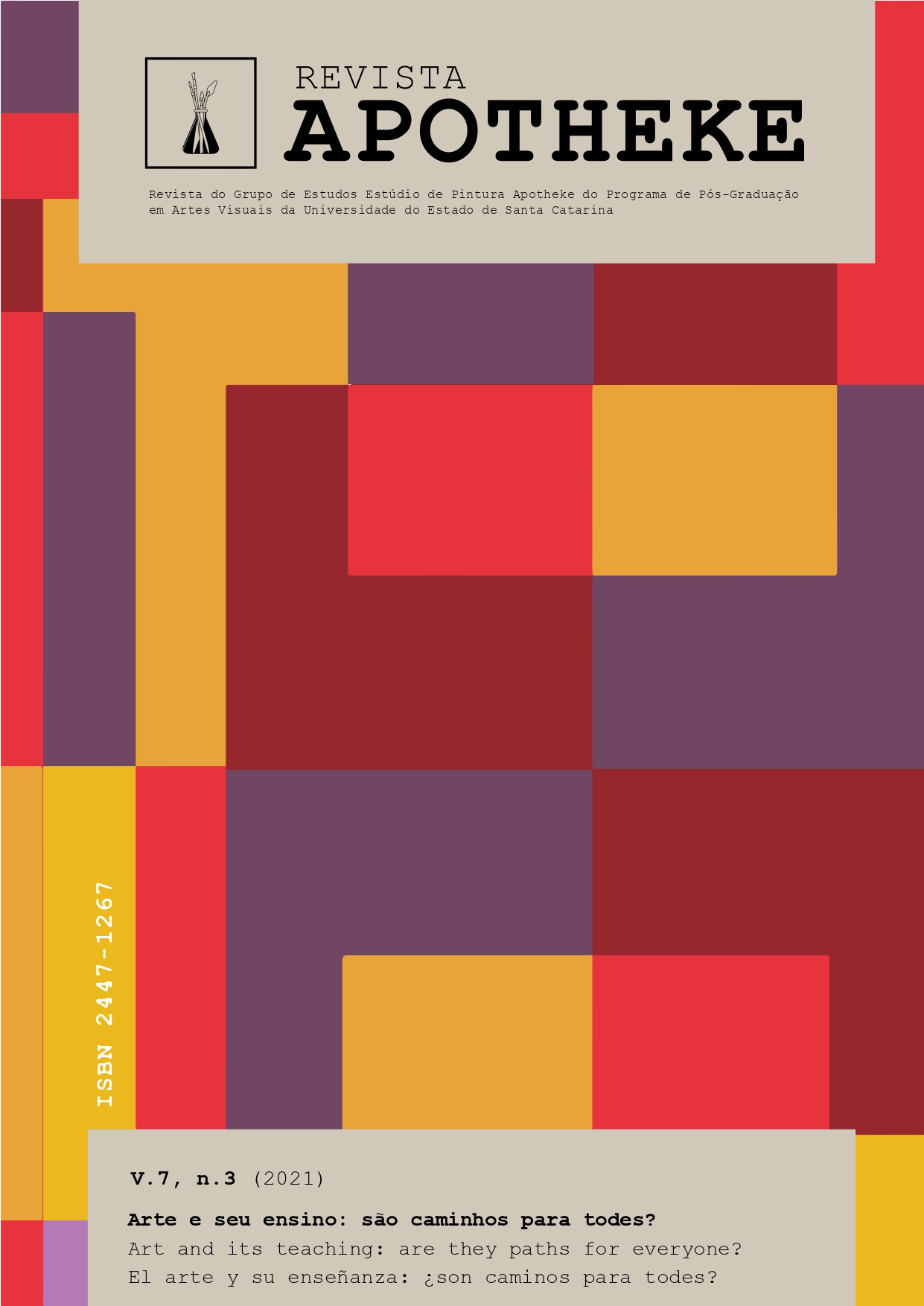Vol. 7 No. 3 (2021): Art and its teaching: are they paths for everyone?

In times of Covid19 pandemic, human relationships have become strange, contaminating, in addition to the disease, fears, violence, hatred, racism, machismo, gender, color and death prejudice. These relationships have become so unbelievable that they seem inhuman to us. But, they are part of the human, the imaginary brings in symbologies, good and bad images. And, in the pandemic, these social masks fell apart when we had to live in isolation and in direct contact with families inside our homes. Whether at home or on the street, violence thrived.
For some, weapons of war resolve everything, for us love and affectionate relationships move us from these places of violence. And it is in this context of love that we propose to think about an edition of Revista Apotheke focused on issues of dissent. The intention is to highlight what is wonderful among people who, generally, are on the margins of society and, therefore, are made invisible. This is a form of resistance. Black, indigenous, gay, non-binary, whatever how they are, whatever how they look like, they deserve to be respected in their differences. These people, usually excluded because they are different, make art and express themselves through art. Art is for everyone. And we have countless people who make art that don't fit a pre-established pattern in the patriarchal society we live in. Removing from the erasure the narratives that oppose the hegemonic ones, giving light to the stories of dissident lives. We intend to transform these narratives and include them in visual arts classes, more and more. These artists are spread around the world, more specifically in Brazil and we need to show them and present how their creation reverberates the life they lead, often in social hiding places. In the teaching of art, it is urgent that we have an inclusive history, and these artists are made visible in the readings of images carried out in the classroom. It is the desire for a more egalitarian world that accepts the contradictions inherent in the human being, a democratic society and with art classes including more trans, black, indigenous, multicolored, different artists, that is, dissident bodies for a dissident art education.
From these premises, we received some texts that break with the European standard of art teaching and bring reflections on these dissidences for art teaching.


